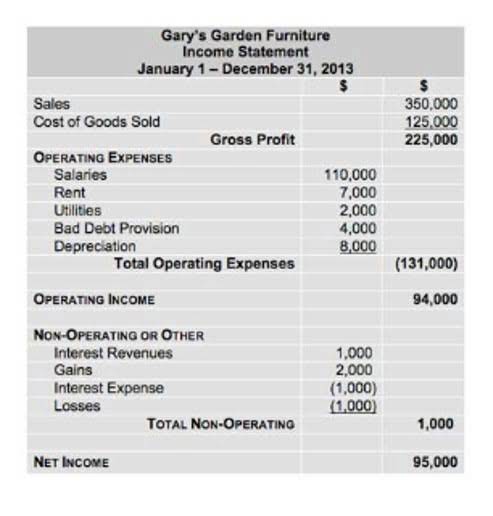
The specific use of retained earnings depends on the company’s financial goals. Ultimately, the company’s management and board of directors decides how to assets = liabilities + equity use retained earnings. Revenue, net profit, and retained earnings are terms frequently used on a company’s balance sheet, but it’s important to understand their differences. When a company consistently experiences net losses, those losses deplete its retained earnings. Prolonged periods of declining sales, increased expenses, or unsuccessful business ventures can lead to negative retained earnings.
Additional Paid-In Capital
Unlike the temporary accounts on the income statement, these are permanent accounts because they are not closed out at the end of the accounting period. Instead, the account balances of the balance sheet accounts at the end of the period are carried forward and become the starting balances at the beginning of the next period. For example, management might decide to build up a cash reserve, repay debt, fund strategic investment projects, or pay dividends to shareholders. A company with consistently mounting retained earnings signals that it’s profitable and reinvesting in the business. Conversely, consistent decreases may indicate mounting losses or excessive payouts to owners. Retained earnings refer to the portion of a company’s net income or profits that it retains and reinvests in the business instead of paying out as dividends to shareholders.
- The net income or loss relates to the current year’s operations and corresponds to the net income of loss of the company.
- Your bookkeeper or accountant may also be able to create monthly retained earnings statements for you.
- Therefore, they are considered assets rather than expenses, which are costs related to a particular accounting period.
- As a result, any items that drive net income higher or push it lower will ultimately affect retained earnings.
- In a limited liability company, capital is referred to as ‘Equity’, which represents how much the owners have invested into the business along with any accumulated retained profits or losses.
- Retained earnings refer to the company’s net income or loss over the lifetime of the enterprise (subtracting any dividends paid to investors).
Social Capital (venture capital) Exits and Investment Trends
- Although retained earnings are not themselves an asset, they can be used to purchase assets such as inventory, equipment, or other investments.
- As with all business financial formulas, you need specific figures to calculate your retained earnings.
- Stock dividends are paid out as additional shares as fractions per existing shares to the stockholders.
- This document is essential as you learn how to calculate retained earnings and other equities.
- As a sole proprietorship, however, it is possible the customer can be awarded more than the value of your ownership in the business.
Rather, they represent how the company has managed its profits (i.e. whether it has distributed them as dividends https://www.bookstime.com/ or reinvested them in the business). When reinvested, those retained earnings are reflected as increases in assets (which could include cash) or reductions to liabilities on the balance sheet. If a company consistently operates at a loss, it’s possible, though less common, for retained earnings to have a debit balance.
- Retained earnings are the cumulative net earnings or profits of a company after accounting for dividend payments.
- Liabilities represent the debts a company owes to its creditors, suppliers, or other external parties.
- A partnership or a corporation can invest in different projects having growth potential in the future.
- It pays the preference dividend to preference shareholders of $75,000 and equity dividend to the equity shareholders of $100,000.
- A dividend is a distribution of a portion of a company’s profits to shareholders as a reward for their investments.
Statement of retained earnings

Since cash dividends result in an outflow of cash, the cash account on the asset side of the balance sheet will get reduced by $100,000. This outflow of cash would also lead to a reduction in the retained earnings of the company as dividends are paid out of retained earnings. There can be cases where a company may have a negative retained earnings balance.

Use an income statement to figure out your profit

Retained earnings are not the same as revenue, the amount of money a business earns in an accounting period. As a is retained earnings a liability result, any factors that affect net income, causing an increase or a decrease, will also ultimately affect RE. Over the same duration, its stock price rose by $84 ($227 – $143) per share.


No Comment
You can post first response comment.